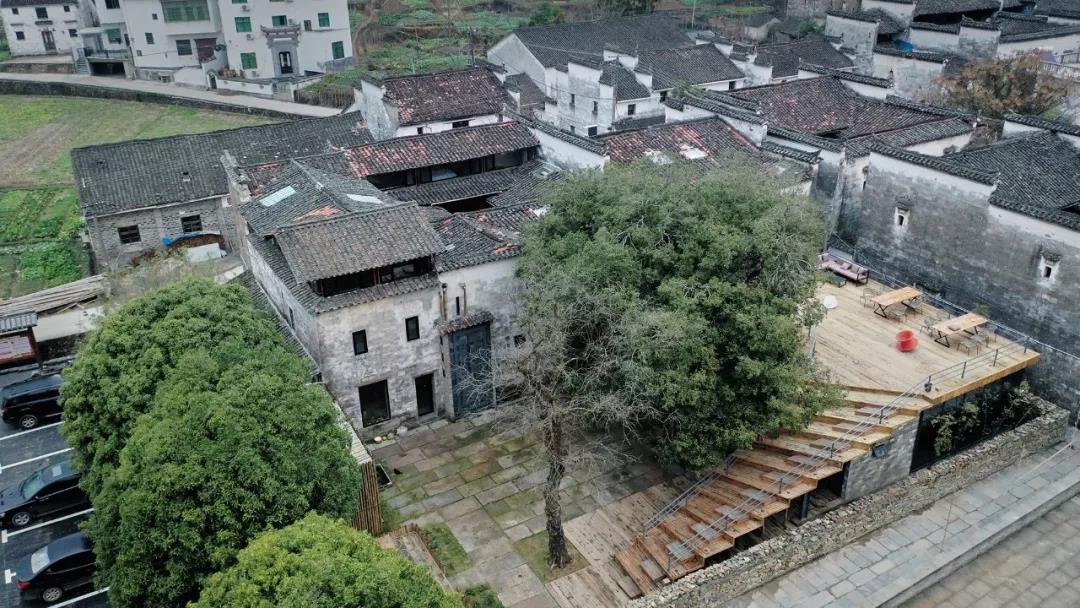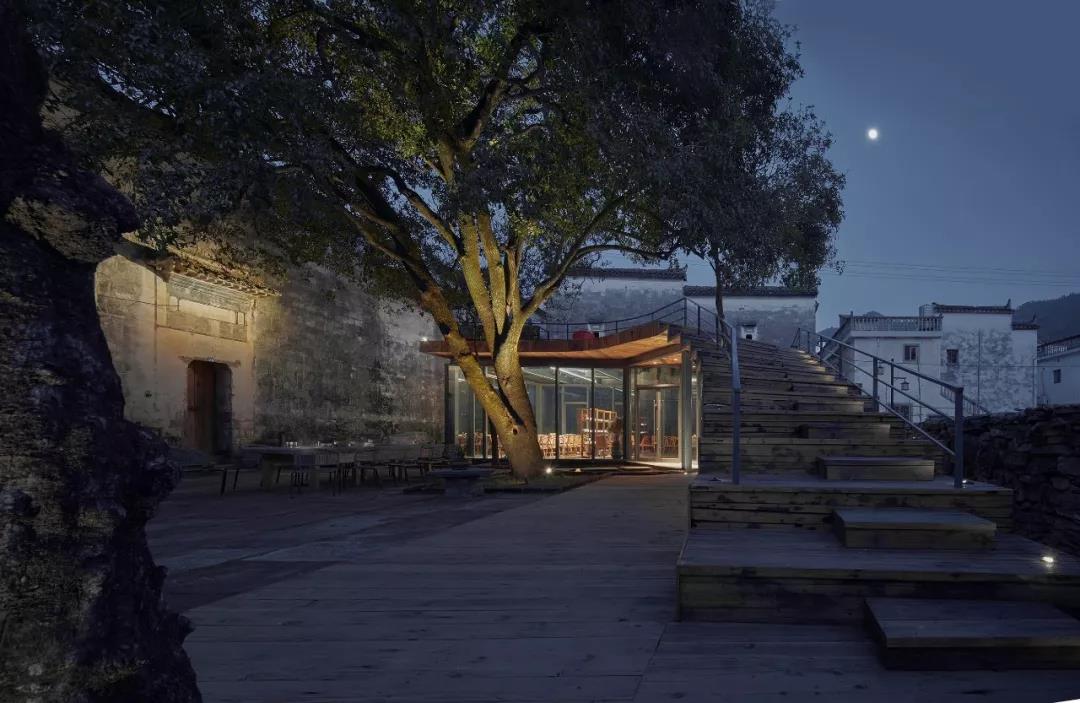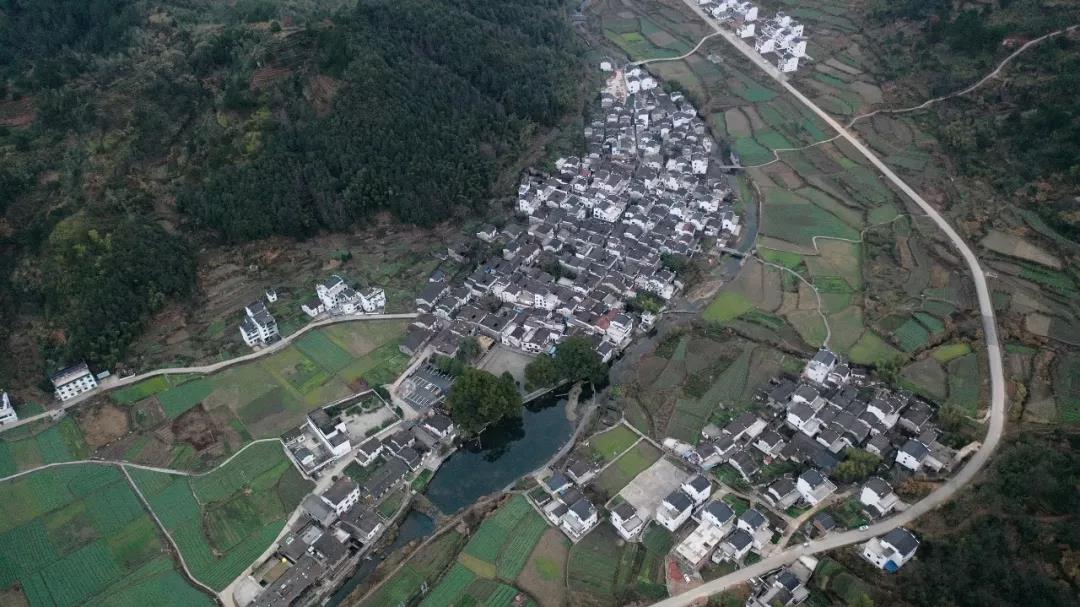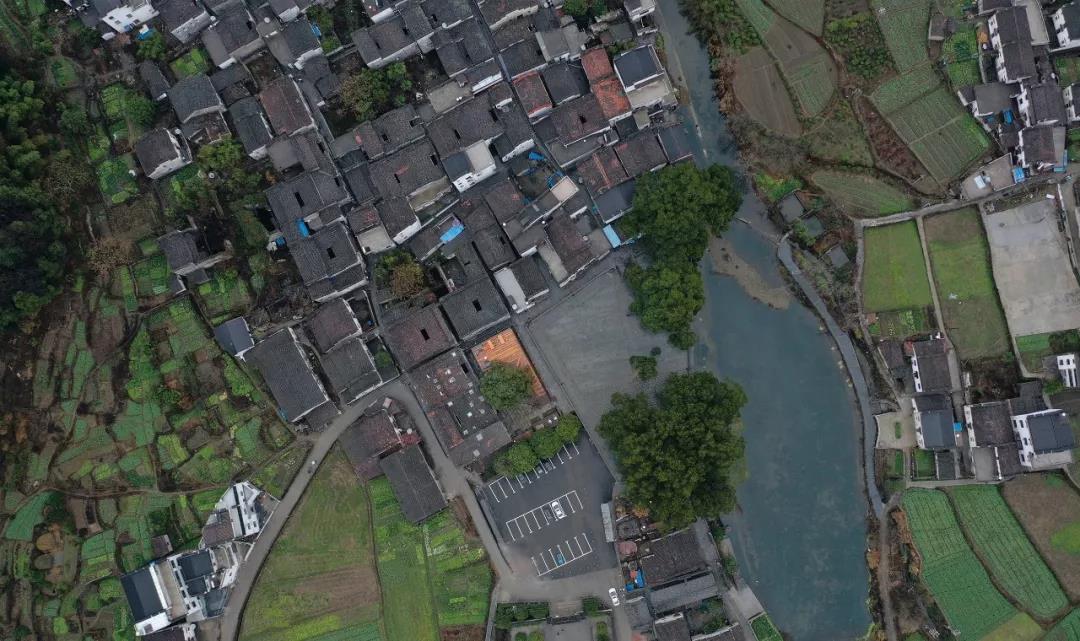婺源留耕堂修复与改造
百年徽州老宅的新生
婺源虹关村留耕堂修复与改造
The New Life of a Hundred-Year-Old Huizhou House
Restoration and reconstruction of Liu Geng Tang Hall in Hongguan village, Wuyuan

留耕堂航拍 Aerial photo of Liu Geng Tang

留耕堂院落空间中的新旧建筑关系 Relationship between old and new buildings in the courtyard space
缘起和沿革Origin and evolution
2017年初,在婺源当地一直专注修复和利用徽州古宅的吴志轩先生找到了设计团队,希望能够共同打造一个以徽墨文化为主题的民宿。设计团队接受了任务,并试图与业主一起,通过修复、改建和创新,探索出特定文化背景下的,符合当代需要的古民居修复和改造利用之路。理想是丰满的,现实并不会一帆风顺,在经历了近三年的做做停停后,项目终于在2019年12月初步完工。
At the beginning of 2017, Mr. Wu Zhixuan, who has been focusing on the restoration and utilization of Huizhou ancient houses in Wuyuan, found our design team, hoping to jointly build a homestay with the theme of Hui ink culture. The design team accepted the task, and tried to work with the owner to explore the way of restoration, reconstruction and utilization of ancient residential buildings in a specific cultural background, in line with the needs of the contemporary. The ideal is perfect, yet the reality cruel. After nearly three years of on and off work stoppages, the project is finally preliminarily completed in December 2019.
项目位于江西省婺源县虹关村。婺源属于古徽州的范围,虹关村位于婺源县城关北去50公里,是明清时代享誉全国的制墨圣地,有"世间烟墨七分出徽州,徽州烟墨七分出虹关"之说。虹关村詹氏家族就是虹关古烟墨的代表:正是詹元秀(1627-1703)改良了原有工艺,使虹关烟墨成为文人墨客的钟爱之品,如今在故宫博物院里就可以看到虹关詹氏墨品。
The project is located in Hongguan village, Wuyuan County, Jiangxi Province. Wuyuan belongs to the range of ancient Huizhou, and the Hongguan village is located 50 kilometers north of Chengguan, Wuyuan County, which is well-known for ink making in Ming and Qing Dynasties. It is said that "seven-tenths of the smoke ink in the world originate from Huizhou, and seven-tenths of the smoke ink in Huizhou originate from Hongguan". The Zhan family in Hongguan village is the representative of Hongguan ancient smoke ink industry: it was Zhan Yuanxiu (1627-1703) who improved the original technology to make Hongguan smoke ink a favorite of the Chinese literati. Nowadays, Hongguan Zhan’s ink can still be seen in the Palace Museum.
留耕堂位于虹关村村口,是清末制墨大师詹成圭的第三个孙子詹国涵的宅第。建筑面对村口1600年的大樟树,及近年来修建的村民活动广场,是当地少有的带院落的宅子。特殊的区位和开敞的院落使留耕堂从古村密集的肌理中"游离"出来,这也是业主长租并修复改造其为民宿的原因之一。
The old house, Liu Geng Tang Hall, located at the entrance of Hongguan village, is the residence of Zhan Guohan, the third grandson of Zhan Chenggui, a master of ink making in the late Qing Dynasty. Facing the big 1600-year-old camphor tree at the entrance of the village and the newly built villagers' activity square, the building is a rare house with courtyard. The special location and open courtyard "free" Liu Geng Tang from the dense texture of the ancient village, which is one of the reasons why the owner rent and renovate it as a home stay.

虹关村总体鸟瞰 General aerial view of Hongguan Village

留耕堂与村民广场及大樟树区位的关系 Relationship between Liu Geng Tang and the location of village square and camphor tree
留耕堂原有空间结构,由东至西分为三个部分:正堂、客馆、厨房。正堂年代最为久远,为单天井三合院,二层,入户门位于建筑东南角,隐于小巷之间,是往日主人一家的居住生活空间。中部客馆为双天井四合院式布局,大部分建筑为二层,由两个独立的居住空间构成,供旧时客人及下人居住。厨房为三层木构空间,一层为厨房,二三层用于堆放杂物农具。建筑三个部分既可独立使用,又可相互连通。建筑与院落通过客馆南侧小门连接,院内有一棵桂树,一棵枣树,一小片竹林。
The original space structure of Liu Geng Tang Hall is divided into three parts from east to west: main hall, guest hall and kitchen. With the longest history, the main hall is a single-patio courtyard with two floors, of which the entrance door is located in the southeast corner of the building, hidden between the alleys, and was the living space of the former master's family. The central guest house is a





